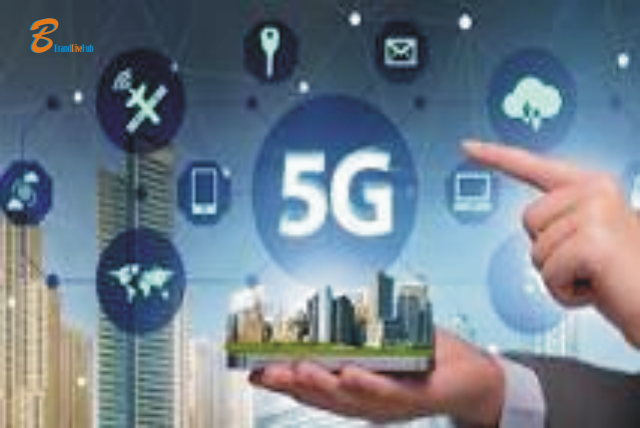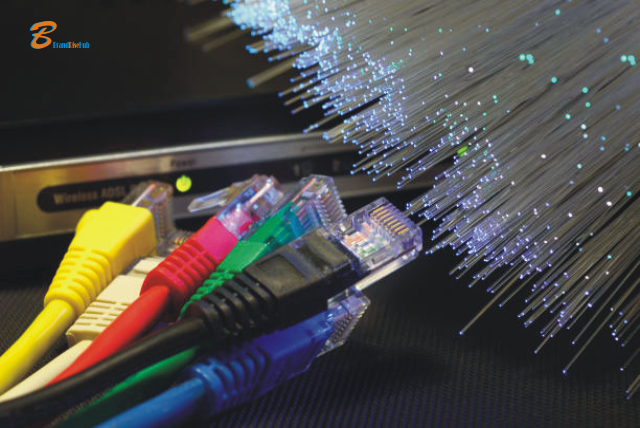5G Technology | Revolutionizing Connectivity in 2025
5G Technology, the latest in wireless stuff, makes your internet way faster. It’s like a turbo boost for your phone. With 5G, you can download stuff super quickly and stream videos without any annoying buffering. It’s perfect for your smart home gadgets and cool futuristic tech. Your phone company started rolling out 5G a while back, making everything speedier. It’s like having lightning in your pocket! And guess what? 5G can handle loads of data without breaking a sweat. It’s like upgrading from a bike to a rocket ship for your internet.
5G is ideal for telecommunications. It is also perfect for the Internet of Things (IoT). Additionally, it suits private networks using private 5G. Cellular companies began deploying 5G networks in 2019 as the successor to fourth-generation wireless (4G).
Contents
- 1 Understanding the Mechanics Behind 5G Technology: How does 5G work?
- 2 What’s the Speed of 5G?
- 3 Advantages of 5G Technology
- 4 5G Technology launch
- 5 Varieties of 5G Wireless Services: What Can We Expect?
- 6 5G vs. 4G: Key differences
- 7 5G use cases
- 8 Economic Implications of 5G Technology
- 9 Who is working on 5G technology?
- 10 What 5G Technology phones are available?
- 11 History of Cellular Wireless Technology
Understanding the Mechanics Behind 5G Technology: How does 5G work?

5G technology works through a 5G New Radio (5G NR) design. It’s like a blueprint for 5G networks. Which shows how they send data. It is built on the same technology as 4G LTE networks. This is called orthogonal frequency-division multiple access. This means that 4G LTE sets the stage for 5G. 5G also uses new techniques. Such as quadrature amplitude modulation and beamforming. These upgrades make the network work better and faster.
5G technology uses cell sites divided into sectors to send data with radio waves. Unlike 4G, which needs big towers for signals to travel far, 5G uses small stations. They are placed on light poles or buildings. Many small cells are necessary. This is because 5G relies on millimeter waves. These waves can’t travel far and get blocked easily by weather or obstacles.
MmWave signals sometimes can’t go through things like trees, walls, or buildings. So, in many cases, mmWave only works if you’re close to a cell site or node. People are trying different ways to fix this. One way is to put lots of nodes all over the place in cities. Then, when you’re using a 5G device, it can switch between nodes to keep going fast, even with mmWave.
What’s the Speed of 5G?
Each band in the 5G spectrum operates at different speeds:
- Low bands give speeds below 1 gigahertz (GHz), but they’re still faster than some 4G LTE speeds.
- Mid-band offers speeds from 3.4GHz to 6GHz. Meanwhile,
- The mmWave band spans from 30 GHz to 300 GHz.
Advantages of 5G Technology
Despite the challenges posed by mmWave’s susceptibility to blockage, 5G boasts numerous benefits. These include:
- Use of higher frequencies.
- High bandwidth.
- Enhanced mobile broadband.
- A lower latency of 5 ms.
- Higher data rates will enable new technology options over 5G networks. These include 4K streaming or near-real-time streaming of virtual reality.
- The flexibility in coverage, having a mobile network made up of low-band, mid-band, and mmWave frequencies.
5G Technology launch
In 2019, when 5G debuted, the market saw the arrival of the first batch of 5G-ready smartphones and related gadgets. They were all set for commercial use.
Initially, 5G rollouts by carriers weren’t so exciting. Some went for a low-band setup first. It wasn’t as fast as promised. Real speed? That’s with mmWaves. Verizon led with mmWave 5G. But, it’s pricey. At the start, only certain cities got it.
Since 2019, 5G carriers have been building up their 5G sub-6 and mmWave networks. Companies like Verizon or AT&T show where they offer 5G on their websites. Each company names its 5G bands differently. For example, Verizon calls its mmWave ‘5G Ultra Wideband,’ AT&T calls it ‘5G+,’ and T-Mobile calls it ‘5G Ultra Capacity.
Varieties of 5G Wireless Services: What Can We Expect?

- Access to operators’ 5G networks is available through 5G cellular services. Starting in 2019, the commercial availability of devices enabled for 5G kicked off the rollout. Completion of mobile core standards by 3GPP is crucial for delivering cellular services.
- Private 5G is all about bringing that super-fast 5G connection to specific places, like big factories or campuses. Think of it like your own Wi-Fi network but with 5G power. Companies or organizations need to have their piece of 5G airwaves. They also require the infrastructure that makes 5G work, like towers and antennas. It’s like having your little corner of the 5G world, but you get to decide who gets to use it. Private 5G can be set up in different ways. You can have someone else take care of it for you. Alternatively, you can own everything yourself. It’s like picking your favorite flavor of ice cream – you’ve got options.
5G fixed wireless broadband is all about getting internet to homes and businesses without cables. To make it happen, network operators put NRs in small cell sites near buildings. These beams then go straight to a receiver on a rooftop or windowsill. It gets boosted inside the building. This method reduces costs for operators. They don’t have to lay fiber optic lines to every home. They need fiber optics only to the cell sites. Customers receive their internet through wireless modems at home or work.
5G vs. 4G: Key differences

The speed and encoding methods change with each new cellular generation, making hardware upgrades necessary. 4G supports speeds of up to 2 Gbps and is gradually getting faster. It’s way faster than 3G, about 500 times. Now, 5G takes things up a notch, potentially being 100 times speedier than 4G.
A big difference between 4G and 5G is latency, which is way lower than 5G. They both use OFDM encoding, like a tech cousin, but 5G’s channels are bigger, needing more airwaves than 4G.
Samsung’s looking into 6G now. Not much is known yet about its speed. We do not yet know how it’ll work. It might be like going from 4G to 5G all over again. Some say it could use mmWave and might still be a long way off, like a decade.
5G use cases
5G Technology, it’s all about possibilities. Picture this:
- Crystal-clear videos, and devices chattering in a smart world.
- Pinpointing locations with precision.
- Surfing the net without wires.
- Talking instantly, and crunching data in the blink of an eye.
- That’s the magic of 5G, opening doors to a faster, smarter future.
Economic Implications of 5G Technology

5G Technology has a big impact on economies, you know? PwC predicted that by 2030, it’s gonna bring in $1.3 trillion to the US economy. In 2019, it’s already shaking things up in different industries. Healthcare is feeling it with $530 billion. Smart utilities got $330 billion. Consumer stuff and media got $254 billion. Industrial manufacturing got $134 billion. Financial services are looking at $85 billion.
CTIA, they said something similar in 2020. The wireless industry made over $1.3 trillion and added almost 4.5 million jobs to the American economy.
Who is working on 5G technology?
Big carriers are busy with 5G networks. Verizon, AT&T, and T-Mobile are all into it. They use low-band, mid-band, and mmWave frequencies. 3GPP is also tweaking 5G specs. More updates are on the way.
What 5G Technology phones are available?
To get 5G, your phone needs special gear. It can’t just update to 5G like magic. You need a phone that does 5G, a carrier that does 5G, and be in a spot with 5G nearby. New phones now support 5G. Like, iPhone 12 and up, or Google Pixel 5 and up, they all do 5G.
History of Cellular Wireless Technology
5G technology, building upon its predecessors, emerged from collaborative efforts started in 2015. Initially, it aimed to set global standards for mobile systems. Over the years, 3GPP convened regularly, refining and enhancing specifications.
By 2017, the fifth-gen specs were out, with 2018 seeing the approval of Release 16, introducing concepts like network slicing. Then, in 2019, 5G went live, with Verizon pioneering in Chicago and Minneapolis. Sprint, AT&T, and T-Mobile quickly followed suit. Different carriers chose varied strategies—some focusing on high-speed mmWave, others on lower band frequencies.
2020 saw the publication of Release 16, emphasizing 5G’s applications in automotive and industrial IoT. Finally, in 2022, Release 18 was launched, broadening coverage to system architecture, security, multimedia codecs, and more.







Hello there,
Your website’s design is absolutely brilliant. The visuals really enhance your message and the content compels action. I’ve forwarded it to a few of my contacts who I think could benefit from your services.
When I was looking at your site “www.brandrisehub.com”, though, I noticed some mistakes that you’ve made re: search engine optimization (SEO) which may be leading to a decline in your organic SEO results.
Would you like to fix it so that you can get maximum exposure/presence on Google, Bing, Yahoo and web traffic to your website?
If this is something you are interested in, then allow me to send you a No Obligation Audit Report for your review. We will fix those errors with no extra cost if you choose any one of our monthly marketing plans.
Have a nice day!
Regards,
Nitin Chaudhary | International Project Manager
Email:- sales@rankinghat.co
Contact Number:- +1- (209) 813-5119
Thanks you